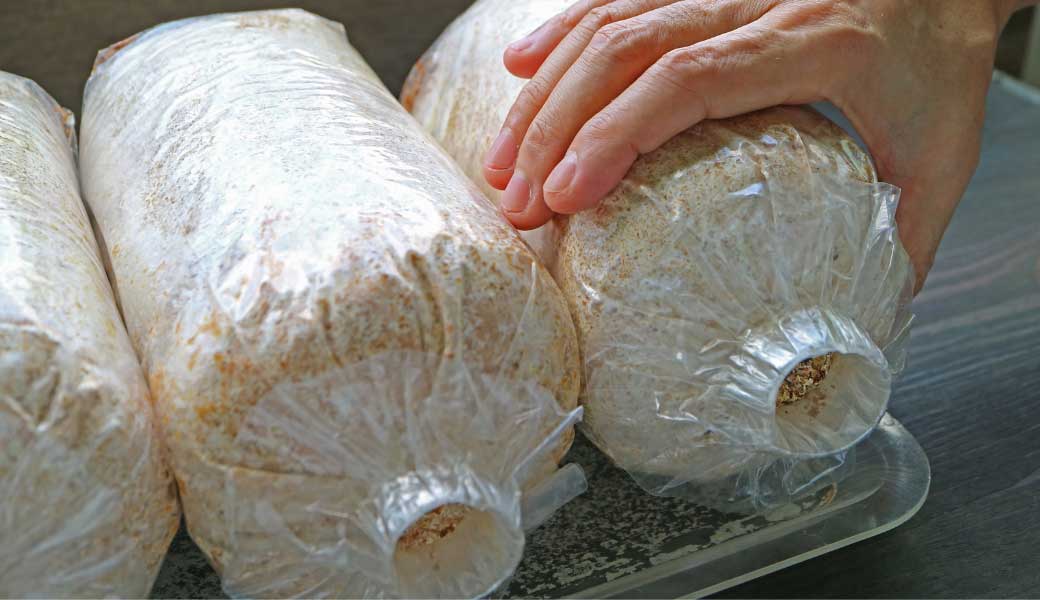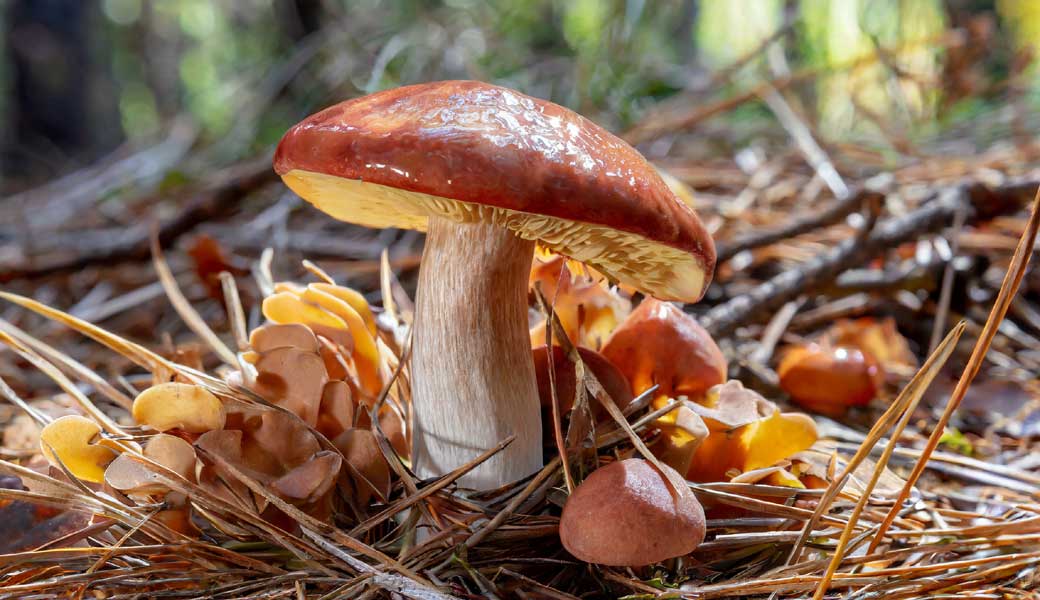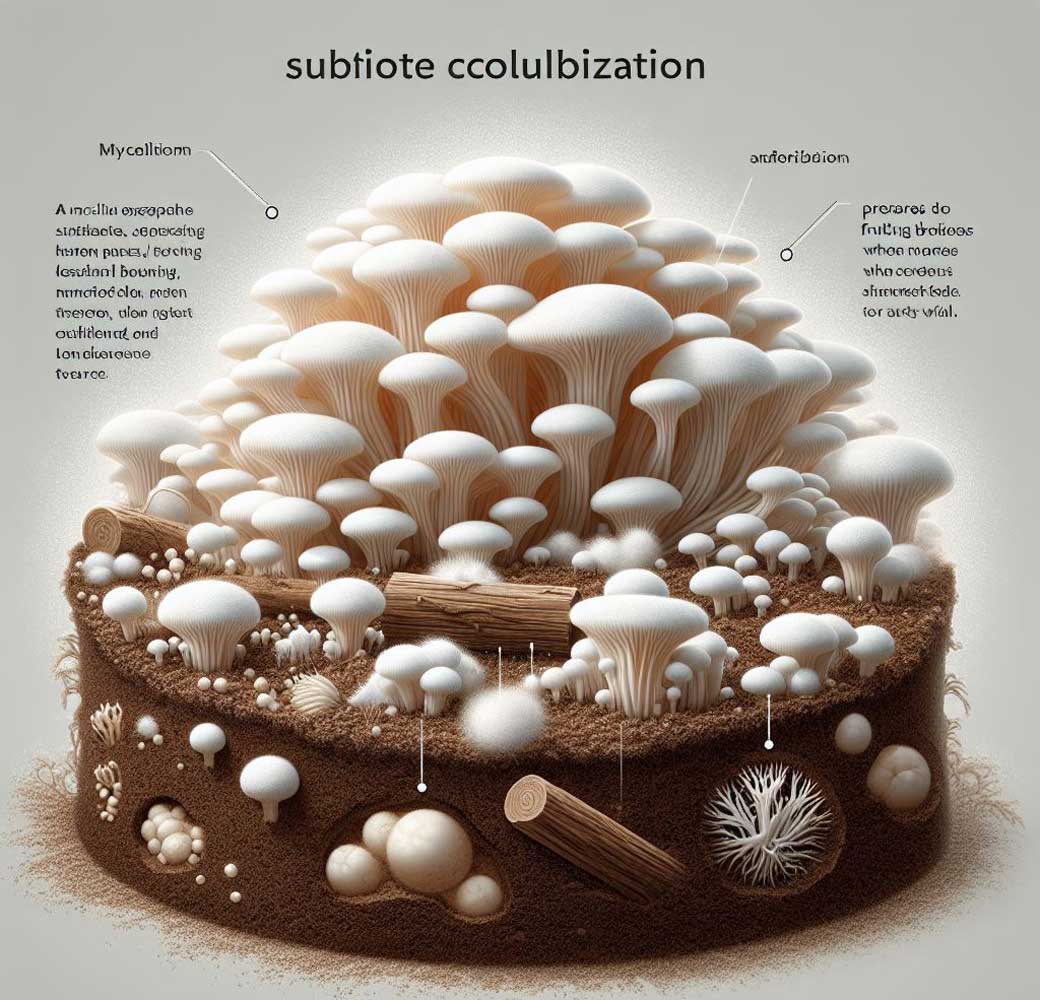Introduction of Spawn Mushrooms: Spawn mushroom refers to the cultivation starter material used for mushroom farming. This spawn contains mushroom mycelium growing on a nutrient-rich substrate.
Mushrooms are one of the most popular and nutritious foods in the world. They are rich in protein, fiber, vitamins, minerals, and antioxidants. But did you know that mushrooms are not plants but fungi? And that they grow from tiny spores called spawn?
In this blog post, we will introduce you to the fascinating world of spawn mushrooms and how you can grow your mushrooms at home using spawn. We will cover the following topics:
- What is spawn mushroom, and how does it work?
- What are the benefits of growing mushrooms from spawn?
- What are the different types of spawn mushrooms, and how to choose the best one for your needs?
- How to prepare and use spawn mushrooms for mushroom cultivation?
- What are the best tips and tricks for successfully growing mushrooms from spawn?
Let’s get started!

What is Spawn Mushroom and How Does it Work?

Spawn mushroom is the term used to describe the material that contains the living fungal cells or mycelium of a mushroom species. Mycelium is the white, thread-like network that forms the body of the fungus. Breaking down organic matter and absorbing environmental nutrients are the processes that help it grow.
Spawn mushroom is used as a starter or seed for mushroom cultivation. It is usually mixed with a substrate, which is the medium that provides nourishment and support for the mushroom growth. The substrate can be anything from straw, sawdust, wood chips, coffee grounds, cardboard, or compost.
The spawn mushroom acts as a catalyst that initiates and accelerates the colonization of the substrate by the mycelium. The mycelium then produces fruiting bodies, which are the edible parts of the mushroom that we see and harvest.
What are the Benefits of Growing Mushrooms from Spawn?

Growing mushrooms from spawn has many advantages, such as:
- It is easy and fun. You don’t need much space, equipment, or expertise to grow mushrooms from spawn. You can do it indoors or outdoors, in any season, and with minimal maintenance.
- It is economical and sustainable. You can reuse or recycle many household items as substrates for mushroom growing, such as paper, cardboard, coffee grounds, or kitchen scraps. You can also produce your spawn from existing mushrooms or buy it cheaply from online or local suppliers.
- Mushrooms are not only delicious but also good for your health. They offer many benefits, such as plant-based protein, fiber, vitamins, minerals, and antioxidants. By consuming mushrooms, you can strengthen your immune system, reduce cholesterol, and even prevent or treat different ailments. In addition, they add a unique and savory taste to any dish that can enhance its flavor profile.
What are The Different Types of Spawn Mushrooms, and How Do You Choose the Best One For Your Needs?
Many different types of spawn mushrooms are available, depending on the mushroom species, the substrate, and the method of inoculation. The most common types are:
- Grain spawn: This is made by sterilizing and inoculating whole grains, such as rye, wheat, millet, or sorghum, with mushroom mycelium. Grain spawn is fast and easy to produce and use. It is ideal for inoculating bulk substrates, such as straw or compost, or for making more grain spawn.
- Sawdust spawn: This is made by sterilizing and inoculating hardwood sawdust, such as oak, birch, or maple, with mushroom mycelium. Sawdust spawn is more compact and dense than grain spawn and can hold more moisture. It is ideal for inoculating logs, stumps, or wood chips or for making plug spawn.
- Plug spawn: This is made by filling wooden dowels or plugs with sawdust spawn and sealing them with wax. Plug spawn is easy and convenient to use. It is ideal for inoculating logs, stumps, or wood chips, especially for outdoor mushroom growing.
- Liquid spawn: This is made by suspending mushroom mycelium in a liquid solution, such as water, sugar, or honey. Liquid spawn is versatile and efficient. It can be injected into any substrate, such as straw, sawdust, wood chips, or cardboard, using a syringe or a spray bottle. It is ideal for inoculating small or irregular substrates or for experimenting with different mushroom species.
What Factors Determine The Best Type of Spawn Mushroom for You?
- When you decide to grow mushrooms, consider the species you want to grow. Each species has specific preferences and requirements for the substrate, temperature, humidity, and light. For instance, oyster mushrooms can grow on almost any substrate, but shiitake mushrooms prefer hardwood logs or sawdust. It’s important to research the optimal conditions for the mushroom species you choose and select the appropriate spawn type accordingly.
- Consider the type of substance you plan to use. Different substances have unique qualities and advantages, such as availability, cost, nutrient content, water retention, and colonization speed. For instance, straw is inexpensive and easy to find but requires pasteurization before inoculation. Wood chips are more durable and can yield mushrooms for several years, but they need to be soaked and drained before inoculation. For best results, match the spawn type with the substrate type.
- Choose the method of inoculation that works best for you. Different methods vary in difficulty, time, and equipment needed. For instance, mixing grain spawn with straw is easy and quick but requires a large container and a clean place. Drilling holes and inserting plug spawn into logs is more time-consuming and labor-intensive but only requires a drill and hammer. Consider your skill level, budget, and availability when selecting a spawn type.
How do You Prepare and Use a Spawn Mushroom for Cultivation?

The general steps for preparing and using spawn mushrooms for mushroom cultivation are:
- Choose the spawn type, the substrate type, and the mushroom species you want to grow.
- Depending on the type and the method, prepare the substrate by cleaning, cutting, soaking, pasteurizing, or sterilizing it. The substrate should be moist but not wet and free of contaminants or pests.
- It would help if you mixed the spawn mushroom with the substrate to grow mushrooms. You can do this by layering, injecting, or inserting it. Ensure the spawn mushroom is evenly distributed and well covered by the substrate. Your chosen method will depend on the type of mushroom you’re growing.
- Incubate the inoculated substrate in a dark, warm, and humid place, such as a closet, a basement, or a greenhouse. The temperature and the humidity should be optimal for the mushroom species you are growing. The incubation period can range from a few days to a few months, depending on the type and the method. The substrate should be kept moist but not wet and free of contaminants or pests.
- Initiate the fruiting stage by exposing the colonized substrate to fresh air, light, and lower temperatures, such as a window, a balcony, or a garden. The light and the temperature should be optimal for the mushroom species you are growing. The fruiting stage can last from a few days to a few weeks, depending on the type and the method. The substrate should be kept moist but not wet and free of contaminants or pests.
- Harvest the mushrooms when they are mature but before they release their spores. The size, shape, color, or texture of the mushroom cap or gills can indicate the maturity and the spore release. The mushrooms should be harvested by twisting or cutting them at the base and stored in a cool and dry place, such as a refrigerator or a paper bag.
What are the Best Tips and Tricks for Successful Mushroom Growing from Spawn?
Here are some tips and tricks that can help you achieve successful mushroom growing from spawn:
- Choose the right spawn type, substrate type, and mushroom species for your needs and preferences. Do some research and experiment with different combinations and methods.
- Use fresh, high-quality, and contaminant-free spawn mushrooms from a reputable source. You can also make your own spawn mushroom from existing mushrooms or buy it online or locally.
- Use a clean, moist, and nutrient-rich substrate suitable for your growing mushroom species. You can reuse or recycle many household items as substrates, such as paper, cardboard, coffee grounds, or kitchen scraps.
- Use proper equipment and techniques for preparing and inoculating the substrate with the spawn mushroom. You can use simple tools, such as a knife, a pot, a bucket, a drill, a hammer, a syringe, or a spray bottle, or buy specialized equipment, such as a pressure cooker, a spawn bag, a filter patch, or an inoculation tool.
- Maintain optimal conditions for the incubation and the fruiting stages, such as temperature, humidity, light, and ventilation. You can use natural or artificial sources, such as a closet, a basement, a greenhouse, a window, a balcony, or a garden, or buy or build a mushroom growing kit, such as a tent, a box, a rack, or a shelf.
- Regularly check the inoculated substrate and the mushrooms to ensure they are well cared for. Look out for signs of contamination, dehydration, colonization, or pest infestation, and take necessary measures to address any issues such as misting, fanning, watering, or removing.
- Enjoy the fruits of your labor. Harvest, store, cook, and eat your mushrooms, or share them with your friends and family. You can also use them for medicinal, cosmetic, or artistic purposes or sell them for profit.
Conclusion
Spawn mushroom is an essential ingredient for mushroom cultivation, as it allows you to introduce mushrooms to a larger substrate where they can grow and fruit. Spawn mushrooms can be made from different substrates and inoculated with different mushroom species.
You can use spawn mushrooms to grow mushrooms in various ways, such as logs, straws, buckets, or beds. By using spawn mushrooms, you can enjoy the benefits of growing your own mushrooms at home.
